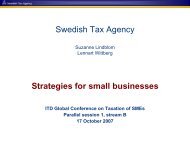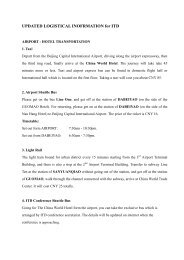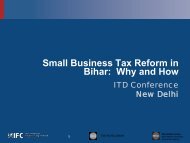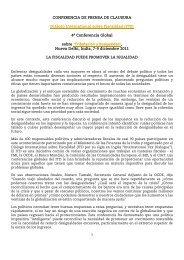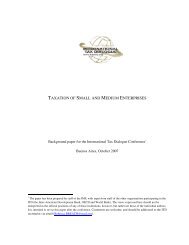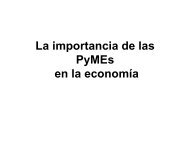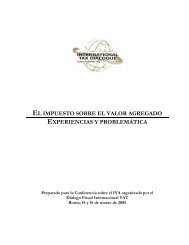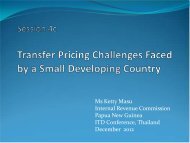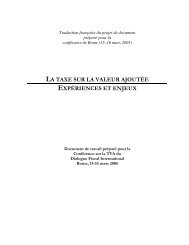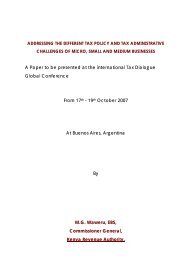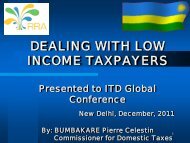Arcotia Hatsidimitris - International Tax Dialogue
Arcotia Hatsidimitris - International Tax Dialogue
Arcotia Hatsidimitris - International Tax Dialogue
You also want an ePaper? Increase the reach of your titles
YUMPU automatically turns print PDFs into web optimized ePapers that Google loves.
2. SELECTING THE RIGHT CASES – 27<br />
development, particularly when these sector experts are involved in the risk identification and<br />
assessment process.<br />
In the UK, HMRC requires the case team that is reviewing a potential transfer pricing risk for<br />
audit or enquiry to consider seeking input from the relevant specialists, including, for example,<br />
economists, trade sector advisers and corporate finance specialists.<br />
Recognising the value of specific knowledge of the business in conducting risks assessments, the<br />
Canada Revenue Agency (CRA) has recently revised its risk assessment to a two tiered approach<br />
using standardised risk assessment tools. The main features of the revised approach are summarised<br />
below.<br />
Box 2. Transfer Pricing Risk Assessment in Canada<br />
• The Tier 1 risk assessment incorporates an integrated team approach which encompasses<br />
domestic, international, aggressive tax planning and goods and services tax risks. The assessment<br />
differentiates inherent risk elements (resulting from complexity or change) from behavioural risk<br />
elements (related to taxpayer behaviour in the areas of governance, tax strategies or ability to<br />
deliver compliance) to ensure that both risk areas are effectively included in the global risk<br />
assessment. Tier 1 segments the MNE population into high, medium and low risk categories, which<br />
supports CRA’s objective to focus its limited resources on the higher risk cases.<br />
• The Tier 2 risk assessment is a more detailed risk assessment which builds on the results of Tier 1.<br />
It provides an efficient and effective way for auditors to further assess and document the specific<br />
risks in the audit. It also provides a means to develop a comprehensive audit plan.<br />
• The Tier 1 risk assessment process for <strong>International</strong> risks, in particular transfer pricing, is supported<br />
by information obtained from an information return of non-arm's length transactions with nonresidents.<br />
This is a robust, issues-based transfer pricing information return and the data from it is<br />
entered into a system that is capable of cross-referencing and matching information in other forms.<br />
The return asks for information about transactions with related parties of many different types,<br />
including partnerships and trusts. This is helping the CRA to extend its reviews of transfer pricing<br />
risks to include networks of organisations that are related and large when considered in the round,<br />
even if individual entities are not. The form can be viewed at http://www.craarc.gc.ca/E/pbg/tf/t106/README.html.<br />
Annex 4 sets out how a major adviser of MNEs approaches Transfer Pricing risk identification<br />
and assessment.<br />
The different approaches tax administrations take to the governance of transfer pricing<br />
programmes is discussed in Chapter 4 but case selection is often the first stage in the governance<br />
process. In the UK a transfer pricing enquiry must not be opened (or any approach made to a<br />
customer that might be construed as the opening of a transfer pricing enquiry) without the prior<br />
approval of HMRC’s Transfer Pricing Panel or Board which will consider a business case. This<br />
business case is prepared using a standard template and is a narrative document which sets out<br />
the case background, the risk assessment work undertaken, the reasons for and against enquiry and<br />
any special features. The template is also used for recording later stage reviews and is a living<br />
document for control of the transfer pricing enquiry. As Chapter 4 explains, the governance process in<br />
Denmark also starts at the case selection stage.<br />
DEALING EFFECTIVELY WITH THE CHALLENGES OF TRANSFER PRICING © OECD 2012



